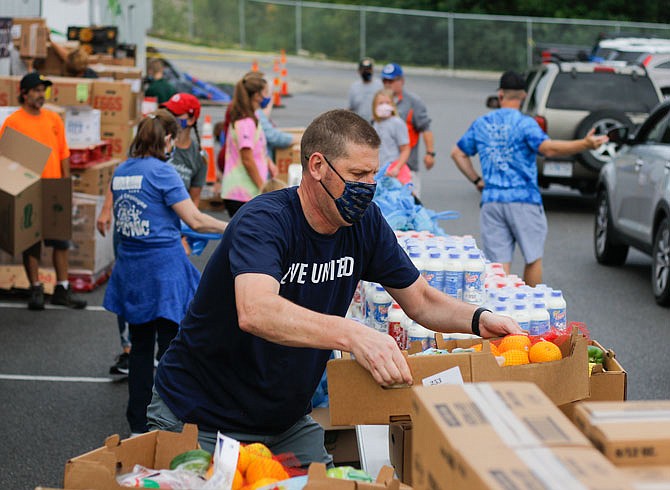While an increased demand for food assistance during the COVID-19 pandemic and its economic fallout have presented challenges for the food bank that serves the people of Mid-Missouri, the pandemic has also led people to increase their support, according to a food bank administrator.
Seth Wolfmeyer - the Food Bank for Central & Northeast Missouri's communication and marketing coordinator - said "people have been incredibly generous," more so than in recent years.
Amid the pandemic, Wolfmeyer said "There's been a renewed focus on food banks and what we do."
The Food Bank for Central & Northeast Missouri - located in Columbia - is one of six in the state, and it serves the Jefferson City and wider Mid-Missouri area.
The food bank distributes food through independent partner agencies such as local food pantries, soup kitchens and shelters as well as by mobile food pantries that regularly deliver food by truck to communities and through packages for school children, veterans and senior adults.
Wolfmeyer said the mobile food pantries served more than 41,000 individuals and distributed more than 1.1 million pounds of food between April and August this year.
He did not immediately have numbers from last year to compare that time period time to, but he said it looked like several hundred more households were being served per month than before.
As a specific month's example, he said 9,300 people were served by the mobile pantries in August 2020, compared to 7,200 people served in August 2019 - an almost 30 percent increase.
Wolfmeyer said there is also a new mobile program this year that added trucks to the schedule that focus on distributing fresh food. He said that program has distributed food to 9,600 individuals so far. Cole, Callaway and Moniteau counties have each been served by one truck, and Camden County has been served by two.
The food bank's mobile pantry calendar is available at sharefoodbringhope.org/events.
Wolfmeyer said demand for food varies day-to-day, and while the overall quantity in pounds of food that's being distributed has not drastically increased, what changed with the pandemic and associated unemployment spikes was that "We were seeing a lot of people who needed help with food for the first time."
Regular clients kept coming, though he added partner agencies have set aside specific hours and established drive-thru options to protect vulnerable people such as seniors.
He said challenges that remain are making sure food can be distributed safely in a way that protects people's health, as well as the availability of shelf-stable food.
Wolfmeyer said it's normally easy for a food bank to acquire shelf-stable food - mostly canned goods. However, when those items are limited on grocery store shelves, "we feel it at the food bank."
He said it's an ongoing issue that when the food bank places an order for a large amount of canned produce, for example, the order will be canceled or delayed by a month or more.
Shelf-stable food has also gotten more expensive, Wolfmeyer added.
He said a plus of the situation has been more availability of fresh foods through the U.S. Department of Agriculture's Coronavirus Food Assistance Program.
The federal government created that program to support farmers and ranchers who had been impacted by disruptions to prices and supply chains caused by the pandemic. It also allowed for the purchase of fresh produce, dairy and meat directed to food banks, community and faith-based organizations, and other nonprofit food distributors.
For people who want to support the food bank, volunteer opportunities continue to be limited because of health concerns.
Wolfmeyer said the food bank had to suspend its volunteer program - "which is a major part of how we are able to accomplish things" - but a grant from the Missouri Foundation for Health allowed some temporary employees to be hired, and the Missouri National Guard has also provided assistance.
He said the best ways someone can get involved would be to donate money through the food bank's website - sharefoodbringhope.org - or host a food or fund drive.

